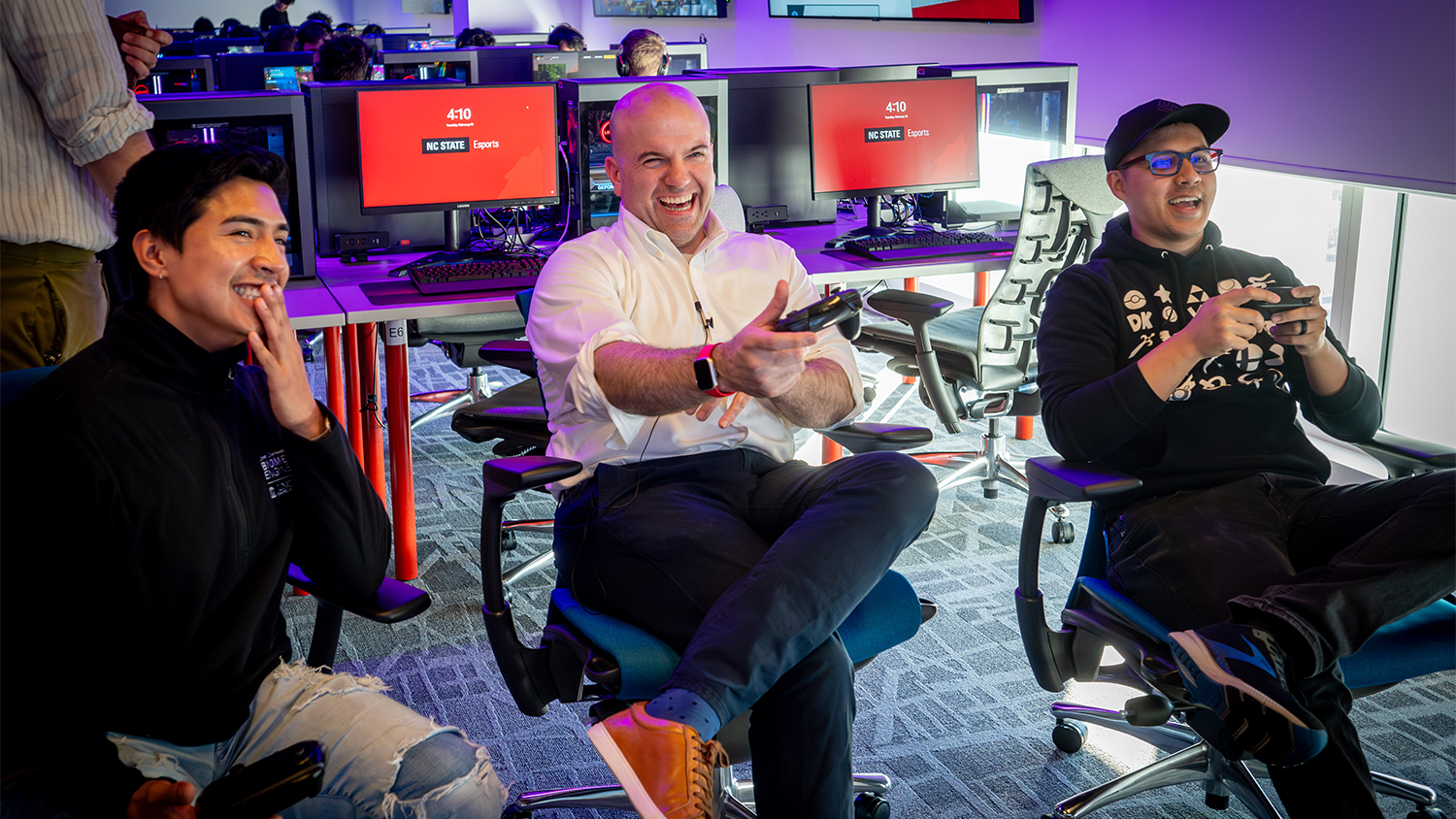Slowing down transmission
Students place second in Creativity category for H1N1 biosensor debuted during international competition.

As viruses evolve and spread, delivering healthcare in a wide variety of settings within and far from traditional hospitals becomes more essential to ensure patients receive the care they need. To address this, a team of students across three different engineering disciplines debuted a novel H1N1 biosensor at the SensUs 2021 competition and won second place in the Creativity award category.
SensUs is an annual international competition started in 2015 that aims to accelerate the development of sensors for better healthcare through the involvement of students with industry experts and health partners. SenseNC, a multidisciplinary team of 10 College of Engineering students, was the only team from the United States.
This is the fifth year that SenseNC competed among more than a dozen teams from nations including China, Canada, Russia and Egypt.
SensUs 2021 focused on the detection of acute respiratory viruses and challenged teams to develop innovative biosensing systems to detect influenza A, or H1N1 — commonly referred to as swine flu — in saliva. Focus on H1N1 was related to the virus’ rapid airborne transmission and its high rates of infection.
The competition was hosted virtually Sept. 3, where the team pitched, presented and tested their original biosensor work to attendees and judges by broadcasting from the Monteith Research Center in the ASSIST Center.
Judging was done by experts within academia, industry and healthcare in the categories of Creativity and Translation Potential.
The team was awarded second in the Creativity category due to the novelty of their sensor and its technical viability for deployment. Key factors included the device’s ability to measure hemagglutinin — a protein antigen that is abundant on the surface of H1N1 and causes red blood cells to clump together — in saliva, to later adapt to detect the influenza virus, and to produce a test result in less than five minutes.
The team started their research in fall 2020 and divided into three sub-teams: the Chemical Team, the Electrical Team and the Business Team.

Led by Joshua Wilson, a senior electrical engineering major, the students of the 2021 team were: McKenna Downey, a senior chemical engineering major; Katie Kilgour, a fourth-year Ph.D. student in chemical engineering; Grace Maddocks, a first-year graduate student in electrical engineering; Sucheta Malladi, a senior electrical engineering major; Kaila Peterson, a second-year Ph.D. student in electrical engineering; Shannon Pinnell, a senior electrical engineering major; Meredith Robbins, a junior industrial engineering major; Sydney Stine, a senior chemical engineering major; and Brendan Turner, a fourth-year graduate student in biomedical engineering.
Building the biosensor, the team focused on two characteristics: ease of transport and ability to rapidly test, recognizing that current solutions are limited in their ability to be transported and then provide at-home rapid testing.
The Chemical Team focused on methods for detecting H1N1 proteins while the Electrical Team developed the electronic hardware, or “brain,” of the system and worked on how to make the system easily portable and usable for clinical or home usage. The Business Team focused on funding requests, product promotion and business model development.
The biosensor works by detecting the presence of very small amounts of hemagglutinin.
The electronic hardware is able to detect the H1N1 virus through electrochemical transduction, where H1N1 proteins bind with aptamers that are connected to a sensor interface device which transfers information through square wave voltammetry. Changes in current magnitude detected through square wave voltammetry signal the presence of significant levels of hemagglutinin.
SenseNC’s sensor is an early example of using aptamers and square wave voltammetry as a transduction method to detect H1N1.
While this biosensor is specifically for the H1N1 virus, the team emphasized the relevance and importance this type of research has in developing rapid yet accurate virus tests going forward.
SenseNC is advised by Michael Daniele, an associate professor in the Department of Electrical and Computer Engineering and the UNC / NC State Joint Department of Biomedical Engineering, with Stefano Menegatti, an associate professor in the Department of Chemical and Biomolecular Engineering.
“Our team is made up of a variety of experience levels,” said Daniele, noting that the team ranges from students who were sophomores when the research began to advanced graduate students, and includes students who had never before stepped into a lab.
Daniele is excited for the students to come out of the competition and year-long project with a better understanding of system design and the engineering cycle, having interacted with peers on a global scale to develop a product that can make a real-world impact among communities.
“It was a lot of fun working with these students as everyone was excited to try something new,” said Daniele. “I’m here to coach these students toward a goal; I didn’t necessarily know the answers, it was an instructional role so we were here together to see what the outcomes were.”
Though the competition, originally to be held in Eindhoven, The Netherlands, was moved online, students appreciated the chance to work and learn in the lab together and to apply what they had learned in class to experience outside of the university setting.
“To me, being a part of SensUs means putting classroom knowledge and concepts to the test in a realistic way,” said Maddocks. “I love that we get to practice these skills on a scale which will actually be able to help people once in its final form.”
- Categories:


